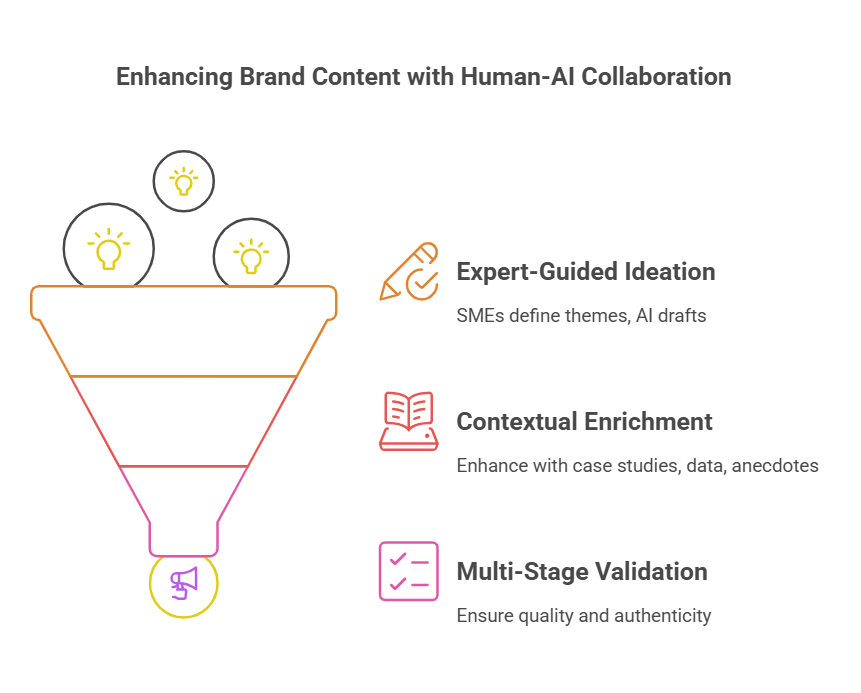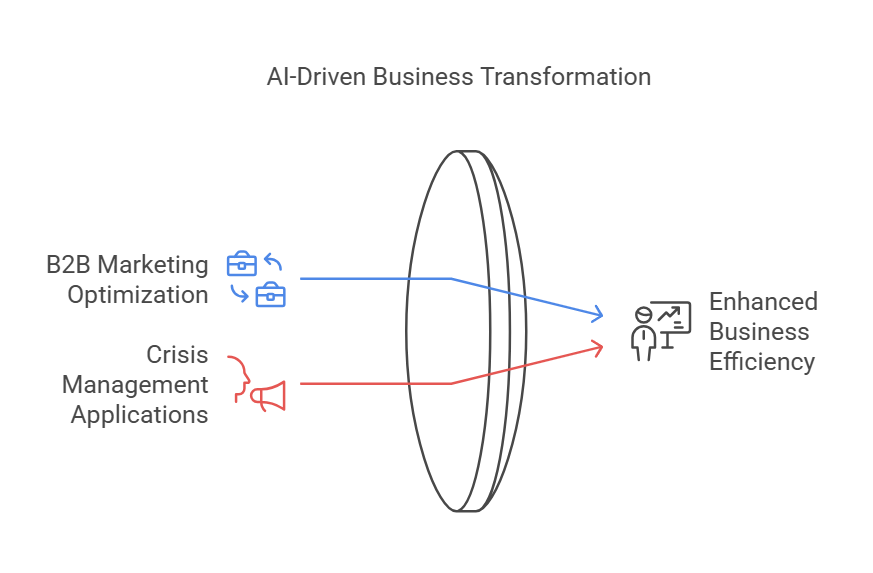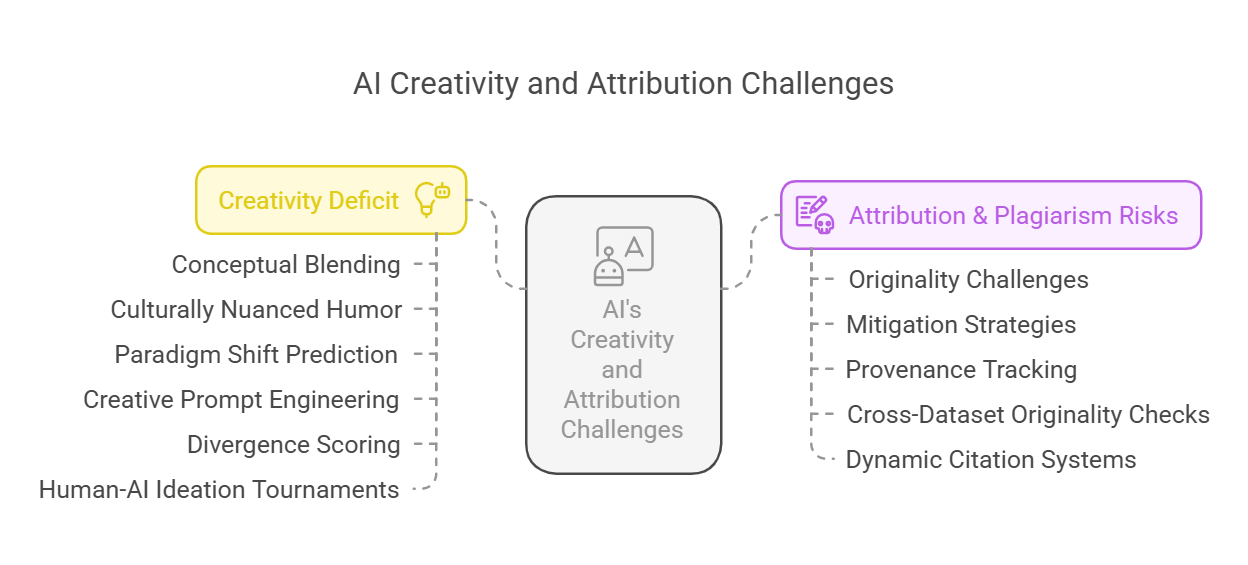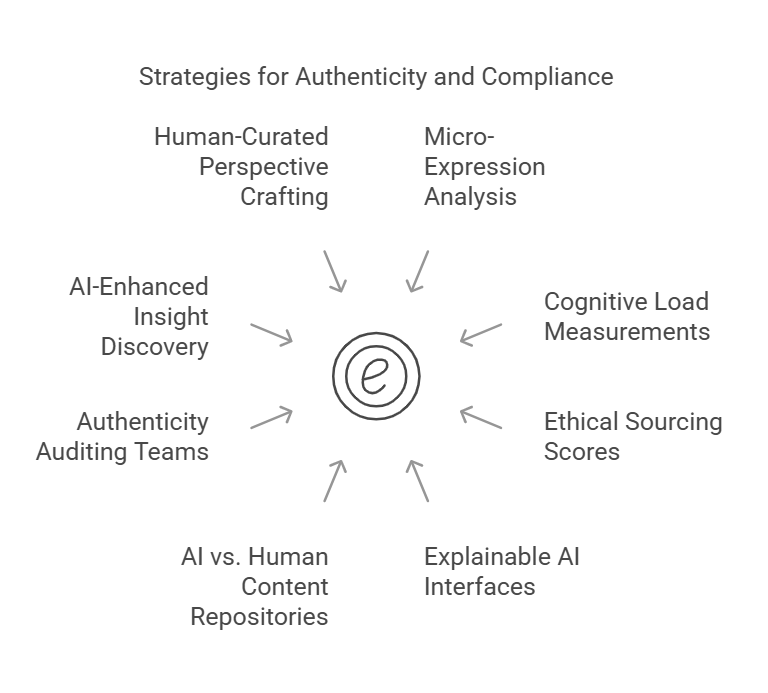AI-driven content creation is redefining marketing, promising efficiency and scale like never before. But there’s a catch—automation without strategic oversight risks eroding brand authenticity and diluting thought leadership. The challenge for business leaders isn’t whether to use AI, but how to integrate it while maintaining credibility, originality, and authority.
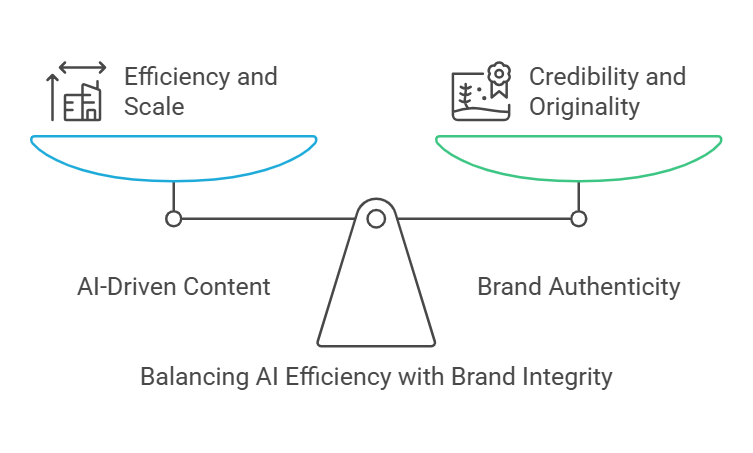
The Authenticity Paradox in AI-Driven Marketing
Quantifying the Trust Gap
Authenticity isn’t just a buzzword—it’s a revenue driver. Data shows that 66% of marketers prioritize authenticity, with high-performing brands (“Authenticity Acrobats”) projecting 2x higher revenue growth. Yet, 77% of North American and European marketers worry AI will produce generic, impersonal content that undermines brand trust. In contrast, only 15% of APAC marketers share this concern, highlighting regional differences in AI adoption and audience perception.
Neuroscience backs this up. Studies reveal that human-created content activates trust-processing areas of the brain more effectively than AI-generated text. While AI can mimic tone, it struggles to inject the unpredictable, idiosyncratic phrasing that signals authenticity to human readers.
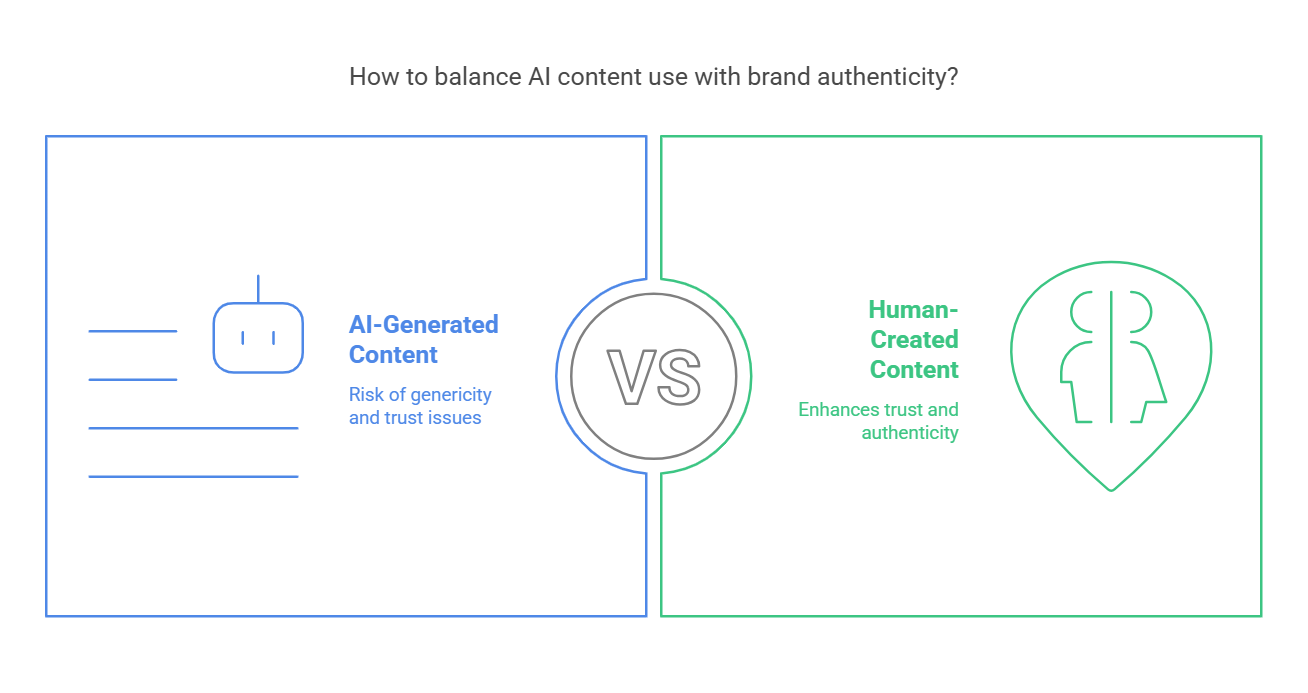
The Thought Leadership Dilution Risk
With an estimated 34.7% of web content now AI-generated, the digital landscape is flooded with hyper-optimized but homogenized insights. A review of 500 B2B whitepapers found AI-generated versions scored 23% lower in perceived expertise, even when technically accurate. Why? Because thought leadership isn’t about repackaging industry consensus—it’s about pioneering fresh perspectives.
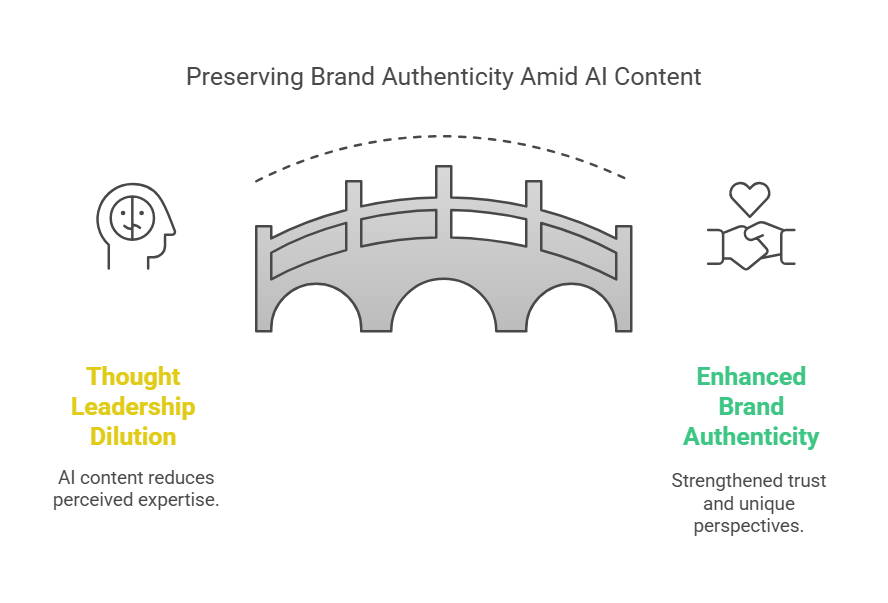
Strategic Frameworks for Authentic AI Integration
Winning brands are deploying human-AI collaboration models that maximize efficiency without sacrificing authenticity:
- Expert-Guided Ideation
SMEs define key themes, while AI structures initial drafts, preserving strategic intent while cutting SME time investment by 65%. - Contextual Enrichment Cycles
AI drafts are enhanced with:- Real-world case studies (+28% perceived authenticity)
- Proprietary data insights (+41% engagement)
- Anecdotes from company archives (+34% emotional resonance)
- Multi-Stage Validation Gates
Quality control checkpoints include:- Brand voice scoring (Acrolinx)
- AI detection (Crossplag)
- Sentiment analysis (Affectiva)
Related Article: How to Blend Human Creativity and AI for Balanced Content
Brand Voice Preservation Techniques
Leading brands are leveraging advanced NLP models to safeguard brand voice:
- Style Transfer Algorithms
AI models are fine-tuned on historical brand content to replicate unique lexical preferences, sentence structures, and conceptual frameworks. - Ethical Attribution Frameworks
Blockchain-based metadata (e.g., TrueSource) transparently distinguishes AI-assisted content, meeting the rising demand for content authenticity disclosures.
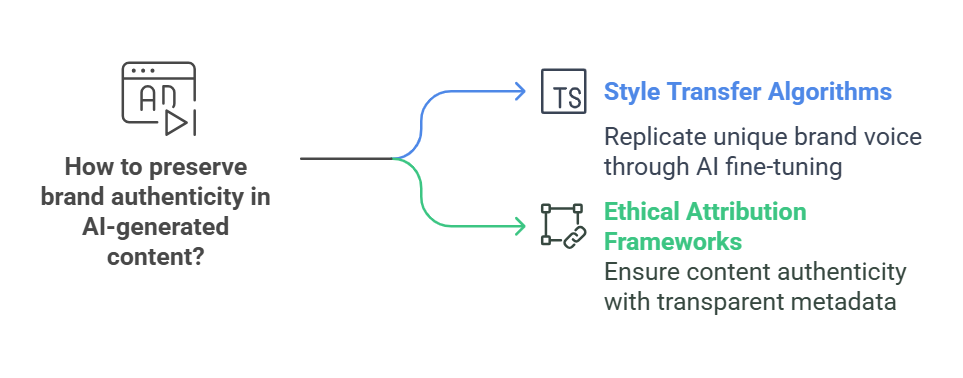
Industry-Specific Best Practices
B2B Marketing Optimization
B2B buyers show 39% higher tolerance for AI-assisted content if it includes:
- Verified technical specifications
- Buyer-journey-aligned problem/solution narratives
- Direct quotes from industry figures
Successful applications include:
- Case Study Enhancement: AI generates multiple narrative angles, human editors refine the best version.
- Whitepaper Personalization: AI dynamically tailors content to audience segments while maintaining strategic messaging.
Crisis Management Applications
AI is revolutionizing real-time response strategies by:
- Monitoring 250+ data sources for early crisis detection
- Generating brand-aligned response drafts within minutes
- Providing scenario modeling for leadership decision-making
During the 2024 cloud security crisis, AI-assisted brands resolved incidents 73% faster than those relying solely on human teams.
Related Article: How Small Businesses Can Simplify AI Content Strategies
Technical Limitations & Mitigation Strategies
AI’s Creativity Deficit
AI struggles with:
- Conceptual blending (merging disparate ideas into innovative insights)
- Culturally nuanced humor
- Predicting paradigm shifts outside training data
Winning brands counter this by:
- Creative Prompt Engineering (forcing AI to explore unconventional angles)
- Divergence Scoring (rewarding originality within brand parameters)
- Human-AI Ideation Tournaments (pitting AI suggestions against human creativity)
Attribution & Plagiarism Risks
AI-generated content carries inherent originality challenges:
- 18% of AI outputs contain near-verbatim excerpts from training data
- 62% of “original” AI ideas overlap with existing mid-tier blog content
Mitigation strategies include:
- Provenance Tracking (tracing AI-generated elements back to sources)
- Cross-Dataset Originality Checks (comparing against 15+ industry databases pre-publication)
- Dynamic Citation Systems (auto-generating reference links for AI-sourced statistics)
Future-Proofing Thought Leadership
Next-Generation Authenticity Metrics
Emerging standards will quantify authenticity through:
- Micro-Expression Analysis (AI assessment of spokesperson genuineness in video content)
- Cognitive Load Measurements (brainwave patterns indicating authentic engagement)
- Ethical Sourcing Scores (blockchain-backed content verification)
Regulatory Compliance
With AI disclosure laws on the horizon (e.g., European AI Act 2026), leading brands are preparing by:
- Implementing Explainable AI (XAI) interfaces that detail AI content generation processes
- Separating AI- vs. human-created content repositories
- Building Authenticity Auditing Teams to track brand voice drift and ethical concerns
Thought Leadership 2.0: The Winning Playbook
To thrive in an AI-driven content landscape, brands must embrace a hybrid strategy:
- AI-Enhanced Insight Discovery
- Predictive trend modeling & automated hypothesis generation
- Human-Curated Perspective Crafting
- Lived-experience storytelling & ethical judgment in AI proposals
- Dynamic Content Ecosystems
- Self-updating whitepapers & interactive AI-driven insights
Related Article: How to Blend Human Creativity and AI for Balanced Content
The Path Forward
Brands that master AI-human collaboration will not only retain authenticity but accelerate thought leadership at an unprecedented pace. Winning strategies include:
- Developing AI Competency Ladders (tiered upskilling programs for marketers)
- Embedding Authenticity by Design (ensuring human oversight at every stage)
- Pioneering Transparency Standards (voluntary AI-attribution labeling before regulation mandates it)
- Investing in Hybrid Creativity Labs (cross-functional AI-marketing innovation spaces)
The future belongs to brands that don’t just use AI—but orchestrate it strategically, preserving human ingenuity while leveraging machine efficiency. Authenticity isn’t about resisting AI. It’s about controlling it before it controls you.
